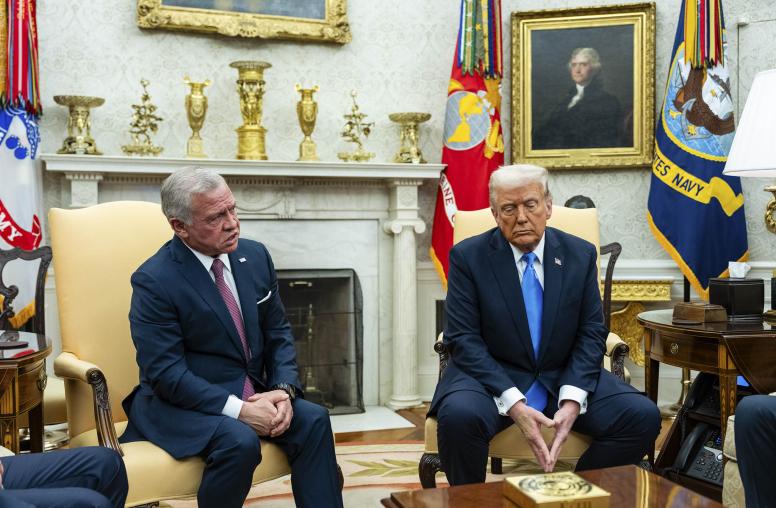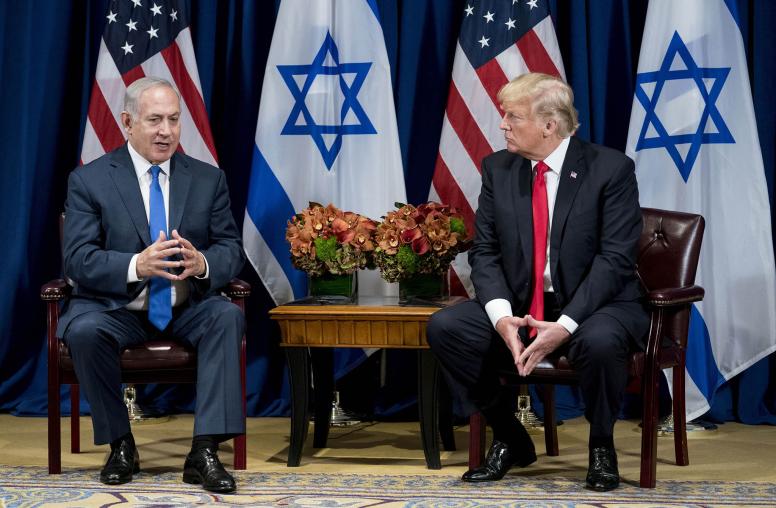Why Biden Should Prioritize Preserving the Two-State Solution
Absent active U.S. diplomacy, confidence-building steps by the Israelis and the Palestinians will not be enough to save the two-state option.
The Biden administration came into office facing a host of pressing domestic and foreign policy challenges. And while issues like a rising China, the Iran nuclear deal, and the COVID pandemic will dominate the new administration’s agenda, it should not lose sight of the decades-old Israeli-Palestinian conflict.

Until relatively recently, international consensus held that the two-state solution was the only path to resolving the Israeli-Palestinian conflict. Even right-wing Israeli Prime Minister Benjamin Netanyahu felt the need to embrace (albeit reluctantly) the “two states for two peoples” formula back in 2009.
Unfortunately, however, recent trends and developments have led many to believe that a viable two-state solution is a dream of the past, undermining the longstanding paradigm for peace. These factors include the Trump administration’s peace proposal; Israel’s annexation debate, continued settlement building and rightward-shifting politics; complex and divided Palestinian politics; and disorderly regional politics. In the near term, the forthcoming Israeli and Palestinian elections mean lack of clarity on the future leadership on both sides, stalling diplomacy further.
Given this landscape, options outside of the two-state solution are continuously being considered. A recent Rand report examined a wide variety of alternatives for resolving the conflict, but concluded that none of the alternatives to two states was acceptable to a majority of Israelis or Palestinians. In successive polls of Israelis and Palestinians, while support for two states has dropped below 50 percent on both sides, a two-state solution still garners greater support among Israelis and Palestinians alike than any alternative model.
The stakes of these trends are high. The demise of the two-state solution would mean that the Palestinians will have no choice but to struggle for equal rights within a one-state option. Israel will not be able to maintain both its democracy and Jewish character. One state with equal rights will be strongly rejected by Israel, as maintaining the country’s Jewish character is supported by a clear Israeli majority. The result will be a transformation of the conflict for the Palestinians from aiming to end the occupation to achieving equal rights—a struggle that could endure for decades and exacerbate the already enormous cost of the conflict to both sides, the region and beyond.
The dilemmas and obstacles are significant but not yet insurmountable. The Biden administration—entering office with a stated intent to reestablish the two-state solution as the ultimate goal—has a responsibility and opportunity to right the ship. To do so will require more than rhetoric. The moment calls for active engagement by the United States, some level of negotiation and compromise by the parties, public demonstration of the steps being taken, and buy-in from key regional actors.
The Two-State Solution and the Political Discourse
In the past few months, several think tank reports offered recommendations to the Biden administration regarding the Israeli-Palestinian conflict. All recognize the daunting challenges around addressing the conflict, but most share the view that the two-state solution remains the preferred (if not the only) possible route for ending the conflict. At the same time, even while all signs point to the conflict not topping the administration’s priority list, the Biden team has put down its own marker that an endgame of two states is the ultimate goal.
In a recent interview, Secretary of State Antony Blinken stressed that President Biden considers the two-state solution “the only way to ensure Israel’s future as a Jewish and democratic state, and the only way to give the Palestinians a state to which they’re entitled,” even as he noted the need for the parties to directly negotiate the final status issues, and a recognition that a final resolution is not a near-term prospect.
In the region and beyond, there is no agreement on the tipping point that would preclude the possibility of a two-state outcome. However, there is agreement that we are moving fast in this direction. In a recent event, Yousef Al-Otaiba, the UAE ambassador to Washington and key architect behind the Abraham Accords, indicated that preserving the two-state solution was one of the main motives behind the agreement, as the UAE was certain that annexation would definitely end the two-state possibility.
Given the Biden administration’s clarity on its position, and the widely held understanding that active presidential diplomacy and reaching a final settlement may not be possible at this juncture, what remains is a less ambitious but more achievable set of immediate objectives: preserving the two-state solution through defining a clear political horizon and endgame definition.
Toward a Recommitment to Two States
This is, of course, easier said than done. The very definition of a two-state outcome has been more distorted than virtually any time since Oslo. The Trump administration’s attempt to redefine the concept muddied an already complicated picture. Despite initial agreement, Netanyahu still proved unable to convince his right-wing coalition to support the plan after they agreed to it when it was initially announced in Washington in January 2020 because it would entail the establishment of a “Palestinian state”—despite being historically generous to Israel.
This is why rhetorical support for the two-state solution is no longer enough. Preserving the prospect of two states must be achieved through negotiations. This will require oversight and active U.S. engagement, but not necessarily rigorous involvement by Biden himself. Negotiations do not have to be direct, and implementation does not need to be immediate, but the outcome should be a public agreement by Israeli and Palestinian leaders that is supported by the Arab Quartet.
Such an agreement need not be granular (at first) but must include two fundamental issues: ensuring Israel’s security and accommodating the basic territorial requirements of a Palestinian state on the basis of the 1967 borders. Such a breakthrough would enable the two sides to negotiate solutions for Jerusalem and refugees and be a step closer to a peace agreement to end all claims.
Monitoring and accountability will also be necessary to reinforce such an approach. The U.S. administration has already stressed that it is “critical for Israel and the Palestinian Authority to refrain from unilateral steps that exacerbate tensions and undercut efforts to advance a negotiated two-state solution.” The administration should signal clearly and credibly to the parties that it takes this position seriously and will accordingly consider implications for non-compliance.
An Evolving Diplomatic Architecture
Continued lip service toward the two-state solution without action will result in eroding negotiating options, making agreement even less likely. Poll after poll of Israelis and Palestinians, particularly youth, demonstrate the rising sense of hopelessness toward the conflict.
Washington does not have to go it alone. A new multilateral forum may be emerging, which could be a great asset to the Biden administration. This so-called “Munich Group”—consisting of Egypt, France, Germany and Jordan—is working to invite Israeli and Palestinian foreign ministers to its March meeting in Paris. Recently, these four countries met with senior Israeli and Palestinian officials to seek commitment toward a package of specific confidence-building measures in preparation for more ambitious steps. Currently, the Munich Group represents the only serious effort to end the Israeli-Palestinian impasse. Still, this group recognizes that U.S. involvement is necessary to achieve major progress. For a president committed to renewing ties to longtime partners, coordination with the Munich Group may represent a fruitful opportunity. Washington has also signaled its intention to re-activate the Middle East Quartet (the U.N., EU, and Russia), which should also be supportive of this effort.
Without an active role by the Biden administration, confidence-building steps by Israelis and Palestinians will not be possible, nor will the preservation of the two-state option. The stakes are high for the United States, Israelis, and the Palestinians as well as for the region as a whole. But the administration still has time to get back to basics and build the basis for a lasting peace.



